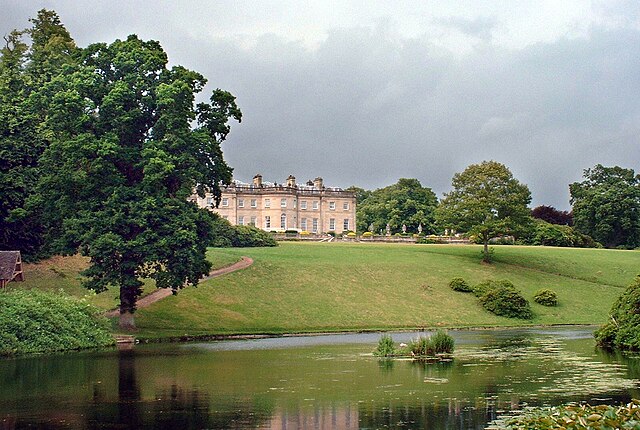Estate houses in Scotland
Estate houses in Scotland or Scottish country houses, are large houses usually on landed estates in Scotland. They were built from the sixteenth century, after defensive castles began to be replaced by more comfortable residences for royalty, nobility and local lairds. The origins of Scottish estate houses are in aristocratic emulation of the extensive building and rebuilding of royal residences, beginning with Linlithgow, under the influence of Renaissance architecture. In the 1560s the unique Scottish style of the Scots baronial emerged, which combined features from medieval castles, tower houses, and peel towers with Renaissance plans, in houses designed primarily for residence rather than defence.
Manderston House, built in the early twentieth century and one of the last major estate houses built in Scotland
Linlithgow Palace, the first building to bear that title in Scotland, extensively rebuilt along Renaissance principles from the fifteenth century.
The sixteenth-century Claypotts Castle, showing features of the Baronial style
Kinross House, one of the first Palladian houses in Britain
Abbotsford, Scottish Borders
Abbotsford is a historic country house in the Scottish Borders, near Galashiels, on the south bank of the River Tweed. Now open to the public, it was built as the residence of historical novelist and poet Sir Walter Scott between 1817 and 1825. It is a Category A Listed Building and the estate is listed in the Inventory of Gardens and Designed Landscapes in Scotland.
Abbotsford in 1880
Abbotsford by Henry Fox Talbot, 1844
Ground plan of Abbotsford.
A View of Abbotsford from across the Tweed, by Elizabeth Nasmyth








